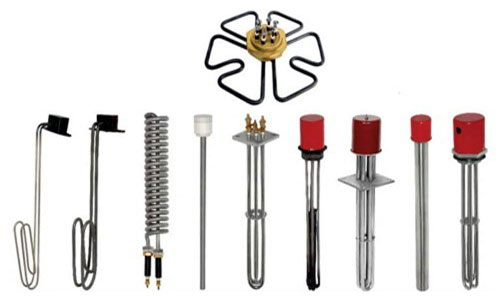- View Mobile Number
What Is The Functioning Process And Significance Of Tubular Heaters?
Posted by Admin on January, 27, 2024

A tubular heater is an electrical device used for various industrial and commercial heating requirements. This heater has a tube-like shape made of metal through which electric current passes to generate heat. This tubular design produces heat distribution efficiently.
The heaters' mechanical and electrical flexibility is essential to help engineers and product designers similarly. Heating demands can be matched accurately by proper selection from various element lengths, sheaths, diameters, and watt densities.
Product Uniformity
Electric tubular heating elements apply the exact amount of heat necessary at a particular area. When used with appropriate temperature control, the product's long-lasting life is assured.
Increased Production
If you add heat to a process, it can lead to increased production. For instance, drying time may be reduced by heating the air or drying the product. Chemical and cleaning processes are usually more efficient when heated, and a more consistent finished product result.
Less Down Time
A high-quality tubular heater with correctly applied watt density and sheath material offers long life, less downtime, and little or no maintenance.
Typical tubular heater installations and uses
In Free Air
Tubular heating elements are compact, rugged heat sources for applications like ovens and drying cabinets.
Their formability lets the fitting around other components and work loads, concentrating heat at any point.
In Moving Air
Compression fittings, factory-mounted fittings or brackets will use a tubular element in a heating chamber or duct like this kind of heater.
In Liquids
Tubular heaters can be mounted through the sidewall of a tank with compression fittings. Factory-mounted fittings can also be used.
Transferring Heat to Metal Parts
The available lengths, watt densities, ratings, diameters, cross-sections, and maximum temperatures provide the solution for a given job.
Immersion in liquid heating
Water and water solutions can generally be heated to any desired temperature. If the liquid is under pressure, temperatures have to be limited and must not exceed the maximum sheath temperature such as minus 100°F.
Oil heating
Tubular heaters are commonly used as immersion heaters in tanks or vessels to heat liquids, heat transfer oils, and other solutions that are not corrosive to steel sheaths.
Process Heating: These heaters are employed in various manufacturing processes where controlled heat is very important and these can help manage heat.
Features to ask from tubular heater suppliers
Temperature Control: Tubular heaters may be used with temperature control devices like thermostats or temperature controllers, to regulate the heat output, depending on the application.
Safety Features: Many tubular heaters are designed with safety features like overheating protection to avoid damage and ensure safe operation.
Customization: Manufacturers often provide customization options for tubular heaters to meet specific customer requirements, including wattage, voltage, sheath material, and length.
Installation: Tubular heaters can be easily installed in equipment or systems using various mounting options, including flanges, threads, or other specialized fittings.
If you are looking to buy a high-quality heater, contact the leading tubular heater suppliers who promise ethical business practices, affordable pricing, guaranteed performance, and affordable price. don’t forget to check for the rating to ensure the quality.
Search
Category
Recent Posts

Leave a Comment